
views
Creating Habits

Make a schedule. If you know the exact times when your pet goes out and comes in, you will be able to track where he is. By keeping yourself to a schedule, you will be able to better remember. This regularity will also benefit your pet, who will enjoy the structure. Match your schedule to the needs of your pet by monitoring when your animal is most likely to need to go outside.
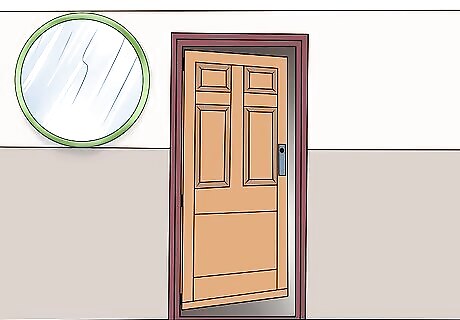
Leave the door ajar. Leave your door open, just a little. This will make it possible for your pet to get back in, in case you forget about him. You may get some bugs inside, if your pet needs to make use of this, but that will help you to remember in the future. Screen doors and bug traps that won't harm your pet are available online to control and insect problems you might have.

Check regularly to see where your pet is. If you get used to looking for him all the time, you are more likely to notice when he is outside. This will help prevent him from getting locked out, as you will be in the habit of knowing where your pet is.
Making Reminders about Your Pet

Set a timer. Get an egg timer or use the timer/alarm feature on your iPhone. If you can't remember yourself and you can't get someone else to remember for you, get a machine to do it. This alarm, provided that you set it correctly, will remind you to let your pet back inside. This works better for dogs, as they tend to stay outside for shorter periods of time. Set the timer on your stove. Get a stopwatch with a timer, and keep it in your pocket. If you get absorbed in the internet or a computer game, set a notification on your primary device.
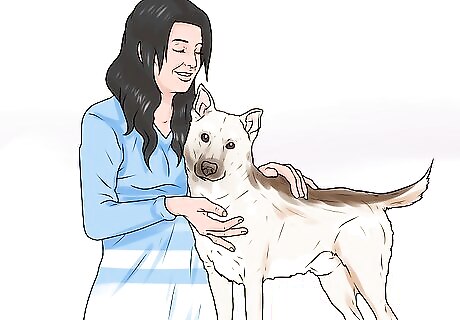
Stay with your pet. In the case that you don't have someone that can help you, stay with your pet. Your pet is your responsibility. If you cannot find another way to make sure your pet does not get locked out, you will need to stay with him. On very cold days, or extremely hot days, this is especially important. During times when it is unbearable for you to be outside, it will likely also be unbearable for your pet. To lock your pet out in these conditions can cause harm or even death from exposure to the elements.
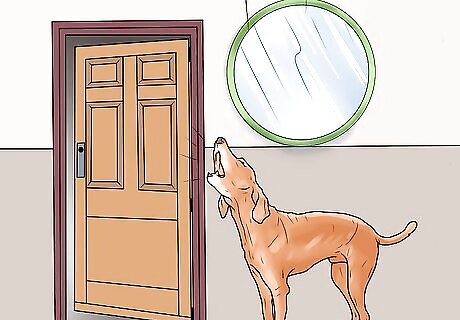
Teach your pet to make noise when he wants to come in. Teaching a dog to bark or cat to meow when he wants to come in can be time consuming, but it will empower your pet, and it can help you remember to let him in. Many pets will naturally make noise when they want to come in. Some will not. In this case, it may be worth it to train them to let you know. Be careful not to bother your neighbors. Don't let your pet cry or bark for an hour at the door. Install a baby monitor outside, so you can hear your pet better.

Enlist a family member or roommate. If you're always forgetting, try asking someone you live with for help. Roommates or family members can help remind you to let your pet back in. They might even let your pet back in for you, if you ask nicely. Offer to trade chores. Do something nice for them for helping you. Explain that it is for the good of the dog.
Building to Help Your Pet
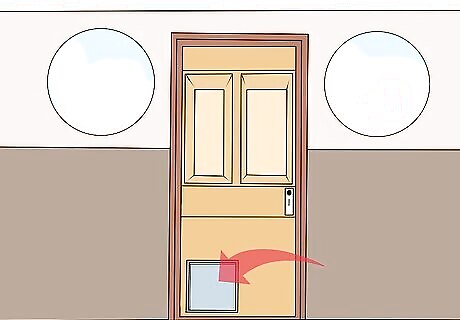
Install a Pet Door. This is the best way to enable your pet to get inside if you lock him out. It empowers your pet to go in and out on his own. Pet doors are not an option for some pet owners, but for those who can install a pet door, this may be the ideal solution. Not only will it make sure your pet won't get locked out, it keeps your pet from getting locked in. Cats can be trained to use pets doors, just like dogs. If your dog is on a leash, make sure it is long enough for the dog to get inside. If your pet door has a lock, make sure to unlock it every time you let him out, or leave it unlocked altogether. Think about your energy bill before installing this option.
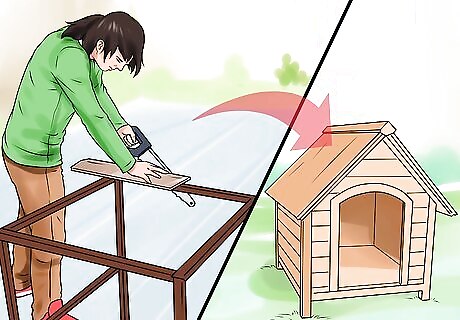
Build a dog/cat house. If you're worried about your pet getting locked out and nothing seems to be working, build an outside place for him to be. If he gets locked out, he will have somewhere to go. A dog house or a cat enclosure can provide a safe, dry shelter for your pet if he gets stranded outside. Try constructing a simple doghouse. Make an insulated or heated doghouse Build a special enclosure for cats. Don't use this as a permanent home for your pet, but as shelter for their comfort.
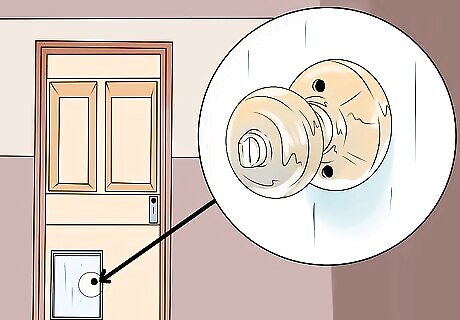
Install a door knob that your pet can open. Some door handles are easier for pets to open. It is possible to train your pet to open these doors. Look for handles that are levers, and spend time training your pet to use it. When your pet can open the door by himself, he is less likely to get locked out.



















Comments
0 comment